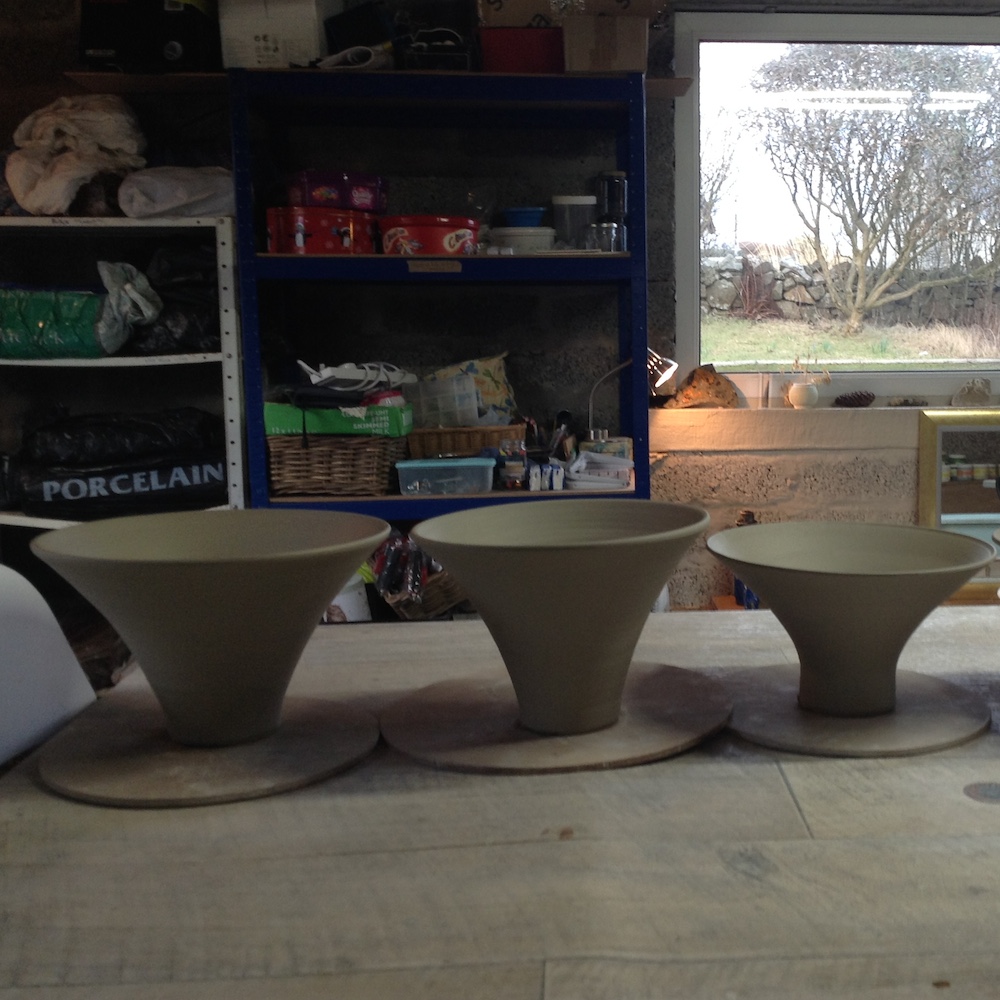GLASGOW, Scotland — Art is a subjective experience and yet we have award ceremonies, prizes that seem to speak with authority because they come from committees of very serious people who know a lot about their fields. That’s fine; awards are a way of looking at a field broadly, to assess what is going on within the medium during a certain period of time. They lay the foundations for a conversation, as people love second-guessing the opinions of whatever committee organized the ceremony.
Images by Iain Smart.
Still, the relationship between subjectivity and authority is a fascinating place to explore, especially with music, which doesn’t exist in physical space and is an ephemeral experience unique to the listener. Can this relationship be described with an object?

Stromness ceramist Elaine Henderson found a way with a series of trophies she created for the Scottish New Music Awards this year. Like all great metaphors, this one works because of its simplicity. The trophies take the form of black porcelain bells, though I suppose speaker cones are more appropriate. These shapes, natural conveyers of sound, are engraved with a section of waveform. These waveforms were pulled from the compositions that were selected for the awards. The black speaker shape combined with the design are very techy, as though Henderson cryogenically froze a song as it was being played.
It’s not the sound itself; it’s not music (I initially thought the awards made a ringing sound when struck, but I was wrong), and yet the engravings are quantitative representations of music. We can never reproduce the essence of the composition in terms of the presence it has or the feeling it creates in the listener, but we can use technology to get just a little closer. We have a little more agency. If we think of it in terms of pop culture, The Outer Limits opens with a waveform running across the screen as a narrator talks of an anonymous “we” who control everything you see and hear.
Waveforms can aide in our understanding of music, especially for people like myself who don’t read sheet music. This little piece of information can teach you so much. It can show you parts of a song you may have missed on a first listen. Indeed, it can even show you the logic of the composer who wrote the piece. A waveform is not music, but it can help you appreciate music more.
Objectivity can’t be decided by a committee, but we can approximate it by knowing the field and observing the diversity of talent that rises from it. We can’t re-create music in a physical form, but we can use physicality as a way of describing our relationship to music. We can’t drive a nail through a song as it’s playing and claim its ephemeral moment forever, but we can make a monument in memory of that moment.
That’s what Elaine Henderson’s awards accomplish. Out of all of them, it’s the ephemerality piece that speaks to me the loudest. Archeologists have never dug up an ancient Greek record collection, but they have plenty of those moments preserved forever on jars. Perhaps Henderson’s works will reach some later generation, who will trace their fingers along the waveforms engraved there and wonder.
Bill Rodgers is a writer for cfile.daily.
Do you love or loathe this post about contemporary ceramic art? Let us know in the comments.








Add your valued opinion to this post.